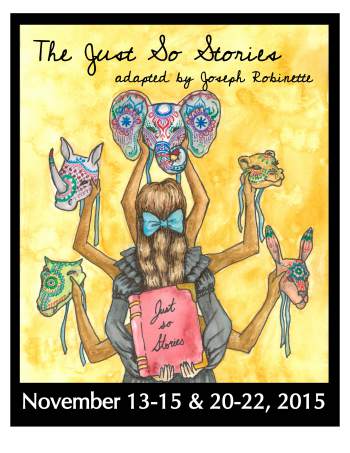Working “In the Round”

for The Just So Stories, Lorraine Knox
Theatre “in the round” has been, well, around for millenia, dating all the way back to ancient Rome. Although proscenium stages (stages framed at the front by a large curtain, which can be closed) are the “norm” in contemporary theaters, many stages have been built specifically for in-the-round performances, including the nearby Wagon Wheel Playhouse in Warsaw, Indiana. Many other theaters have the ability to be configured in the round at times. The PPG ArtsLab, afO’s new home stage, is one of those theaters.
The term ‘in the round’ is a bit of a misnomer.



